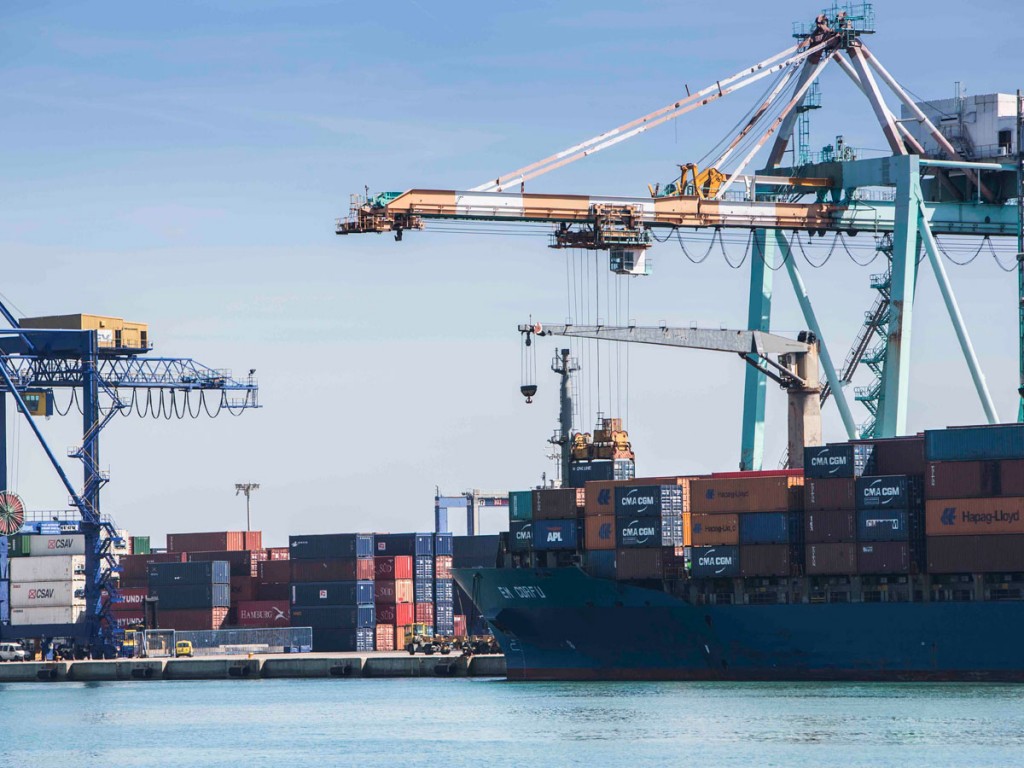Valenciaport is the driving force behind economic activity, facilitating the export activity of companies. Cargo TEUs grew by 24.38% in March (accumulating 8 consecutive months with positive figures) and unloading TEUs by 31.82%
March has recorded an increase of 12.96% in freight traffic and an increase of 9.22% in the movement of containers through the docks of Valenciaport. The growth in Valenciaport's traffic reflects the dynamism and the capacity to generate employment and wealth of the business fabric. The port's facilities are an instrument at the service of Spanish industry to export its products to all corners of the world - in March, cargo containers grew by 24.38%. In fact, Valenciaport maintains commercial relations with almost 1,000 ports in 168 different countries, which makes it the key port for the exit and entry of goods for its area of influence and positions it as a strategic hub in the Mediterranean.

And in these data, it is worth highlighting the importance of cargo containers (export), which in the first quarter of the year grew by 17.2%. This is a sign of the recovery of activity in the production of goods and products of the companies in the hinterland operating in Valenciaport. In this period, TEUs dedicated to unloading (imports) grew by 8.52% while those in transit grew by 4.89%. Empty containers fell between January and March by -4.38%, a sign that, due to the dynamism of sales abroad, alerts exporting companies and the need for this type of container to be able to fill them with goods.
Export containers grew by 24% in March
If we look only at the month of March, the last month analysed by the APV's Statistical Bulletin, the total amount of goods handled at Valenciaport rose to 7,243,572 compared to 6,412,452 in 2020, which reflects a growth of 12.96%. In this month, 466,779 TEUs were handled, an increase of 9.22%, with a 13.76% increase in full containers.
Of these, it is worth highlighting those dedicated to exports, which grew by 24.28%, and have now accumulated eight consecutive months of positive figures and is an example of the capacity of Valenciaport as a driving force for the economy, facilitating the exporting work of companies. Unloading containers grew this month by 31.82%, and transit containers by 4.85%. Empty containers fell by 7.33% in March.
Increase in all sectors in the first quarter of the year
Regarding goods traffic by sector, it should be noted that all sectors analysed in the Bulletin show positive signs in the first quarter of the year. Construction materials, with 1,930,913 tonnes, increased by 26.03%, among which exports of processed construction materials grew by 33%. The agri-food industry has mobilised a total of 2,197,233 tonnes with a growth of 13.88% compared to the first three months of 2020. Also noteworthy is the dynamism of other goods (including wood, paper and machinery) with 1,903,963 tonnes and a growth of 6.17%. The vehicles and transport elements sector, with 2,755,583 tonnes, continues to be the industry that moves the most goods through Valenciaport, with 3.53% more than in 2020. Within this sector, automobiles and their parts fell by 2.73%.
Total ro-ro freight traffic between January and March was 3,020,980 tonnes and already shows a growth of 1.78%. Valenciaport also mobilised a total of 138,127 automobile units under the goods regime, 14.84% less. In this sense, it should be noted that 50,311 cars were moved in March, a figure very similar to 2020.
China grows by more than 30%
China has reaffirmed itself in the first three months of the year as Valenciaport's main partner with very notable growth, with 1,831,092 tonnes of goods moved (+32.94%) and 165,641 containers (+34.91%). About TEU traffic, the USA is in second place (-3.38%), followed by Turkey (-1.92%) and in fourth place is India with a growth of 41.62%. The strong growth in Canada (51.26%), Morocco (+46.98%), Italy (+31.13%) and Saudi Arabia (+38.57%) should be highlighted.
By geographical areas, the main market is the Mediterranean-Black Sea with 5,926,249 tonnes of goods handled and a growth of 7.43%, followed by the Far East with 2,546,448 tonnes (+22.06%). In this section, the dynamism of regions such as West Africa (+29.95%), India-Pakistan-Bangladesh-SkriLanka (+35.82%), Canada-USA Great Lakes (50.99%) or New Zealand (+73.56%) should be highlighted.









